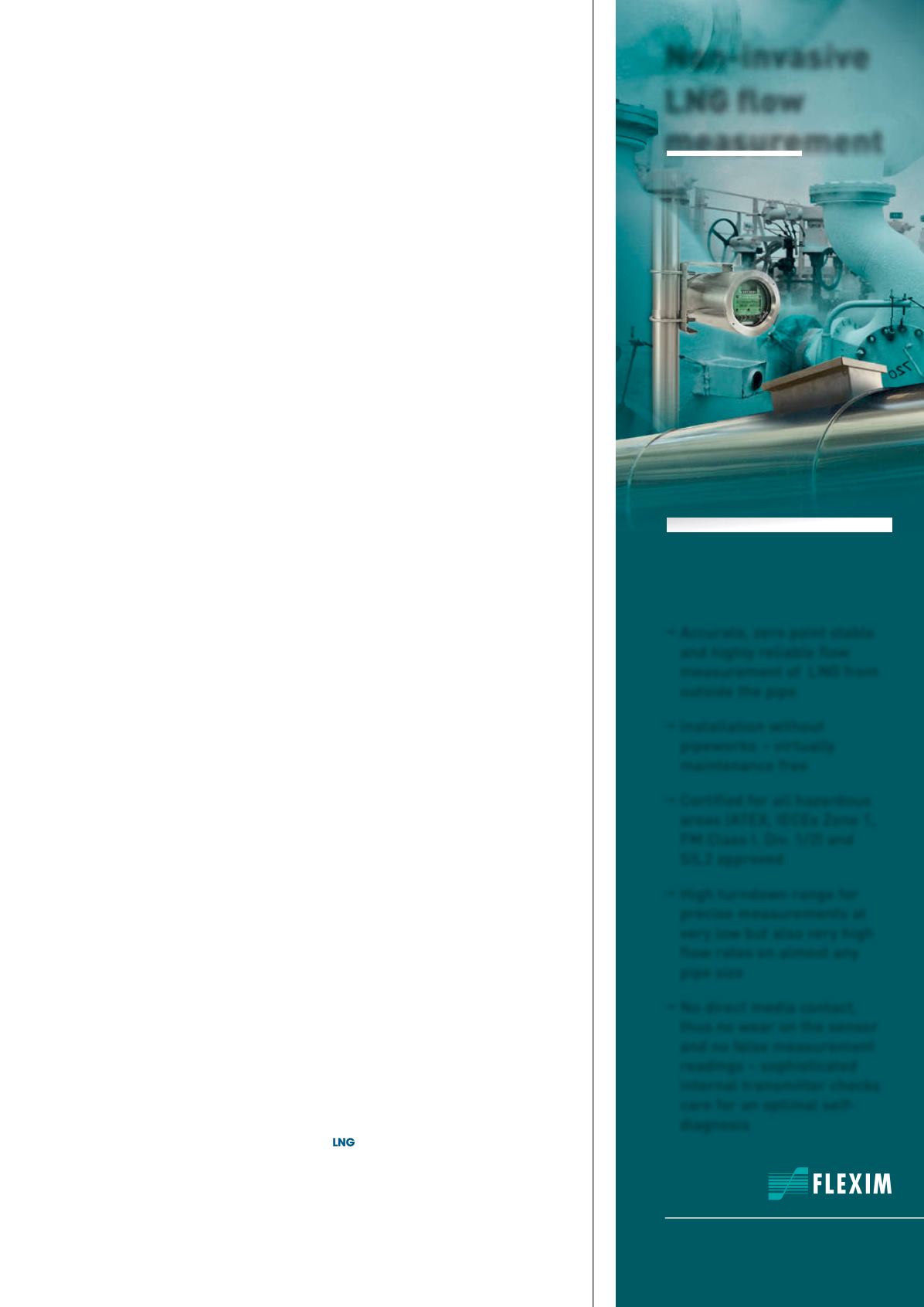
characteristics at the low temperature, and the wind speed and direction.
Typically, the nominal case region is approximately -15°C, the cold region is
approximately -30°C and the arctic region is approximately -45°C.
The DNV GL recommendation for basic winterisation is that heating
power capacity for anti-icing and de-icing shall not be less than the following:
300 W/m
2
for open deck areas, helicopter decks, gangways, stairways,
etc.
200 W/m
2
for superstructures.
50 W/m for railings with inside heating.
These are the minimum heating output requirements. For individual
cases, lower ambient temperatures and/or higher wind speeds will increase
the heat loss, due to convection of air, and the heating output shall increase
accordingly.
The following factors should be taken into account when designing the
heating system:
Snowfall in the area of operation.
Ambient temperature.
Wind velocity in the area of operation.
Water source.
Electrical heat tracing solutions
A vessel’s superstructure surfaces and systems should be heat traced or
de-iced in accordance with a winterisation plan, including: the open deck
area, gangways, stairways, and railings. eltherm electrical heat tracing
solutions are used to prevent freezing for a number of applications, such
as: exposed piping, tank vents, instrumentation, recirculation shell valves,
overboard discharge and drainage.
The company conducts Finite Element Analysis (FEA) simulation based
on the environmental conditions to confirm and verify each design. All
products and solutions must generally be certified to DNV GL, ABS,
Bureau Veritas (BV), TUV, ATEX and IEC Ex standards and are required to
be suitable for marine and oil and gas offshore hazardous and harsh
environmental applications.
Conclusion
The proper design and implementation of an electric heat tracing
system for offshore oil and gas applications is critical to ensure a safe,
reliable and efficient operation. There are many different types and
configurations of heating cable designs available, and involving a heat
tracing supplier specialised in manufacturing the appropriate products
and selecting the best solution should be considered. This important
part of the project engineering should not be left to chance, because
failures in the system could cause significant costs and damages to the
operator and owner of the offshore facilities. The harsh environment
that all components of the heating system will be exposed to must also
be considered, and material selection and workmanship of the heating
cables is critical to ensure a long operational life-time.
The use of state-of-the-art design tools during the planning phase,
including multi-dimensional modeling software that provides optimum
layout and failure analysis, are vital to the successful implementation of a
reliable and efficient system at a reasonable cost. The eltherm heating
cable, in combination with the individually planned and designed
monitoring and control system, represents an excellent solution for a
reliable and efficient heating system.
Reference
1. World Oil Outlook 2015, OPEC.
Non-invasive
LNG flow
measurement
info flexim.com
Accurate, zero point stable
and highly reliable flow
measurement of LNG from
outside the pipe
Installation without
pipeworks – virtually
maintenance free
Certified for all hazardous
areas (ATEX, IECEx Zone 1,
FM Class I, Div. 1/2) and
SIL2 approved
High turndown range for
precise measurements at
very low but also very high
flow rates on almost any
pipe size
No direct media contact,
thus no wear on the sensor
and no false measurement
readings – sophisticated
internal transmitter checks
care for an optimal self-
diagnosis
No pipeworks - highly
reliable - accurate –
maintenance free


